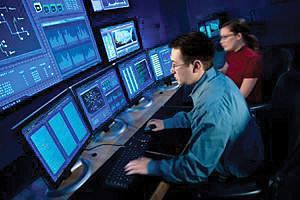INDIAN ARMED FORCES CHIEFS ON OUR RELENTLESS AND FOCUSED PUBLISHING EFFORTS

The insightful articles, inspiring narrations and analytical perspectives presented by the Editorial Team, establish an alluring connect with the reader. My compliments and best wishes to SP Guide Publications.

"Over the past 60 years, the growth of SP Guide Publications has mirrored the rising stature of Indian Navy. Its well-researched and informative magazines on Defence and Aerospace sector have served to shape an educated opinion of our military personnel, policy makers and the public alike. I wish SP's Publication team continued success, fair winds and following seas in all future endeavour!"

Since, its inception in 1964, SP Guide Publications has consistently demonstrated commitment to high-quality journalism in the aerospace and defence sectors, earning a well-deserved reputation as Asia's largest media house in this domain. I wish SP Guide Publications continued success in its pursuit of excellence.
- Indian Air Force Aims for Full Indigenous Inventory by 2047 — Air Chief Marshal A.P. Singh
- General Upendra Dwivedi takes over as the Chief of the Army Staff
- Rajnath Singh assumes charge as Defence Minister for the second consecutive term
- Admiral Dinesh K. Tripathi assumes Command of the Indian Navy as 26th Chief of the Naval Staff
- Prime Minister witnesses 'Bharat Shakti' – a Tri-Services Firing and Manoeuvre Exercise in Pokhran, Rajasthan
Lockheed Martin opens cyber centre

Lockheed Martin recently opened its UK Security Intelligence Centre (SIC) in an effort to provide additional protection against cyber attacks.
Officially opened by Gerald Howarth, Minister for International Security Strategy, at the company’s facilities in Farnborough, UK, the centre is intended to enhance the company’s cyber threat detection abilities in order to provide ‘intelligence driven defence’.
The news follows a well-publicised cyber attack against the company in May this year and which Chandra McMahon, Chief of the Information Security Centre for Lockheed Martin, cited as an example of the firm’s position as a target for ‘hacktivists’.
In development since 2008, the £2.5 million self-funded centre adds to two other facilities in Denver and Gaithersburg in the US. This new SIC will extend the amount of analysis that can be conducted, with a further 20 employees at the centre, five of which are trained analysts.
Lockheed Martin believes it has a niche as far as cyber detection is concerned in that it analyses previous attacks when a new one comes through to identify whether there is ‘campaign’ being executed by an attacker. Other companies which have opened up similar specialist cyber centres include Northrop Grumman.
‘Other companies see cyber defence as a mindless process’, said Giri Sivanesan, head of cyber for Lockheed Martin’s UK IS & GS Security division. ‘We wanted to concentrate on cyber attacks on the macro level. When an attack comes in, this yields intelligence,’ Sivanesan explained. McMahon said that 80 per cent of attacks on the company could be dealt with by COTS technology.
However, the remaining 20 per cent of ‘high-level’ attacks need to be analysed and fed into a chain of other attacks so as to protect the company and its suppliers from future attacks. She also described how the company receives some 30 million e-mails per day, with only a small amount of these actually delivered once they have been filtered.
“The past two years have been very aggressive” in terms of attacks, McMahon explained. “Our network is larger than many of the governmental networks. We’re highly targeted, as you can imagine, being in the defence business,” she added.
Sivanesan said that in the future the company could utilise this experience in protecting itself so as to provide it as a product that can be sold to customers to protect their systems.





